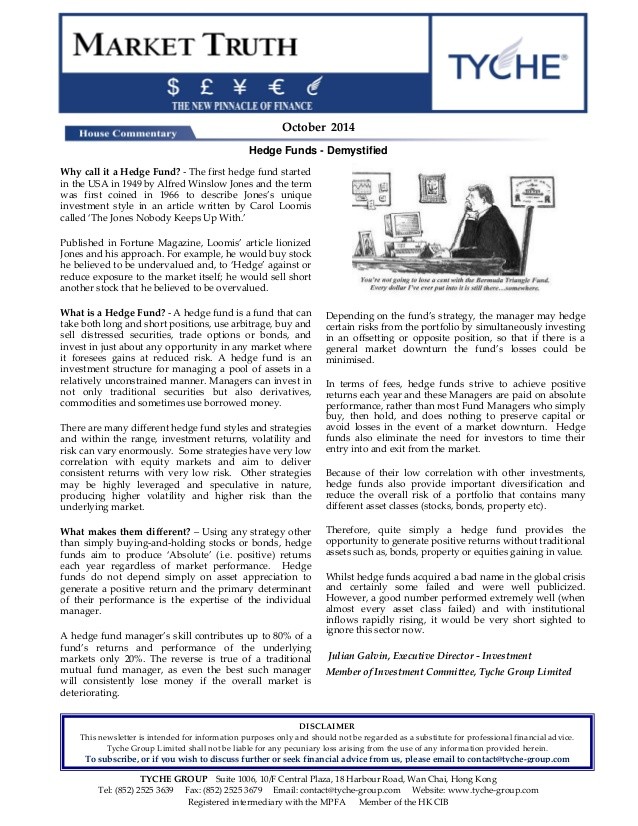Mutual Funds Demystified
Post on: 16 Март, 2015 No Comment

Mutual Funds De-mystified
Mutual Funds De-mystified
The ultimate goal of any and every investor is wealth generation and wealth protection. For this purpose there are several instruments available in the market such as bank FDs, equities, commodities, post office deposits etc. One such financial instrument available is with the mutual fund industry or an Asset Management Company (AMC).
Though there is no official definition of a Mutual Fund, by and large it represents a collective portfolio that invests the money of a large number of investors in a group of financial instruments with the main aim of providing consistent long term gains (though the specific objectives vary from scheme to scheme).
The best way to understand Mutual Funds is to think of it as an indirect mode of investment in other market instruments such as equities, debt or commodities wherein the investment is managed by professional wealth managers who charge a small fee in return. It is just like hiring a driver when we dont have the time and energy to battle the traffic and paying the driver in return for taking us to our destination.
The Mutual Fund market in India is still largely an untapped industry and has tremendous potential for growth. The first introduction of a mutual fund in India occurred in 1963, with the launch of the Unit Trust of India (UTI) which enjoyed a monopoly in the Indian mutual fund market until 1987 when a host of other government-controlled Indian financial companies came up with their own funds such as SBI (State Bank of India), PNB (Punjab National Bank), and Canara Bank. It was in 1993 that this market opened to the Indian private players.
However, even after almost two decades of operations, the Assets Under Management (AUM) equalled Rs 7,81,711.5 Crores (Source: Association of Mutual Funds, India) and only about 10% of the households have invested in mutual funds.
A major reason for low penetration of mutual funds in the indian households is the lack of understanding and knowledge of how mutual funds operate.
Investments in mutual funds are comparatively easier and safer than investing directly in equities or commodities. Fund houses or Asset Management Companies (AMCs) are organisations that run and operate several funds. Some major players include HDFC Mutual Fund, Reliance Mutual Fund, SBI Magnum Fund house, Birla Sun Life Mutual Fund and others. The AMCs further recruit Portfolio Managers professionals experienced in wealth management that start and operate funds under different categories like equity, debt etc.
The investor buys units of mutual funds (same as buying shares of a stock) and the managers invest this money in other market instruments according to their expertise. If the managers investment pays off, the per unit value of the mutual fund increases, thereby, making profit for the investor. For this the AMC charges a small fee (as low as 0.25%) to meet its expenses and to pay the wealth manager.

Thus, mutual investments are just a direct and hassle free way of investing in any financial instrument via the AMCs.
This article is a first in a series of educational articles on Mutual Fund investments to be published going forward.
In our next article on mutual funds, we will discuss fund houses and various types of Mutual Funds
About the author:
The author, Nishchal Dua is from Thapar university, Patiala. He has been an active investor in Mutual funds and brings with him considerable knowledge of the mutual fund industry.














